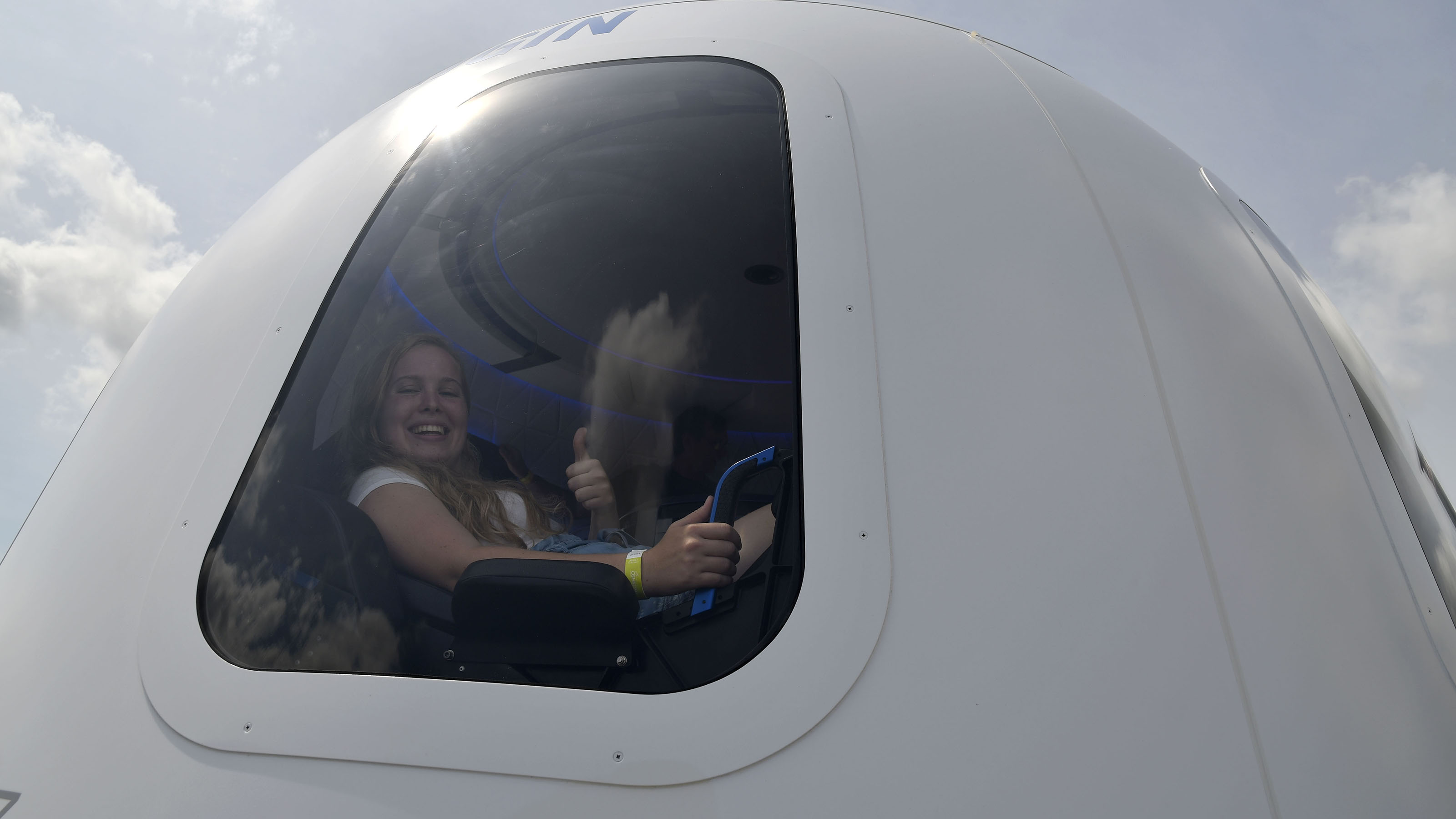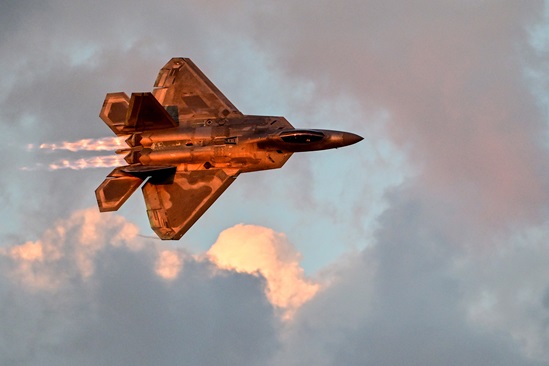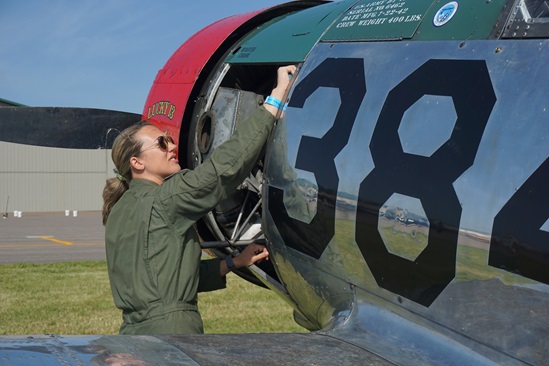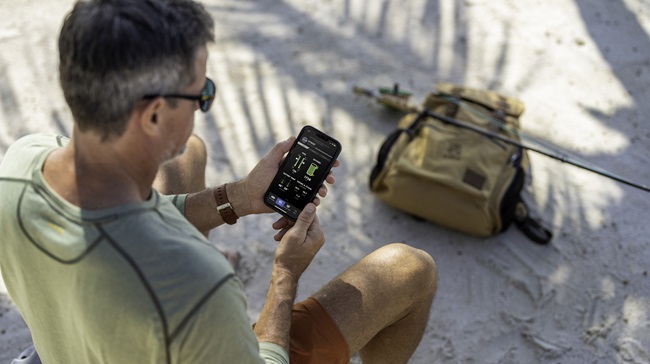Blue Origin wows AirVenture crowds
What would you pay for an 11-minute experience that launches you into suborbital space for about four minutes of weightlessness and then a spirited descent through the atmosphere for a landing under canopy about two miles from where you took off in West Texas? The folks at Blue Origin hope your answer is “A lot!”
The company, owned by Amazon founder and CEO Jeff Bezos, is working to deliver on that promise in the next one to two years. It isn’t saying yet what it might cost.
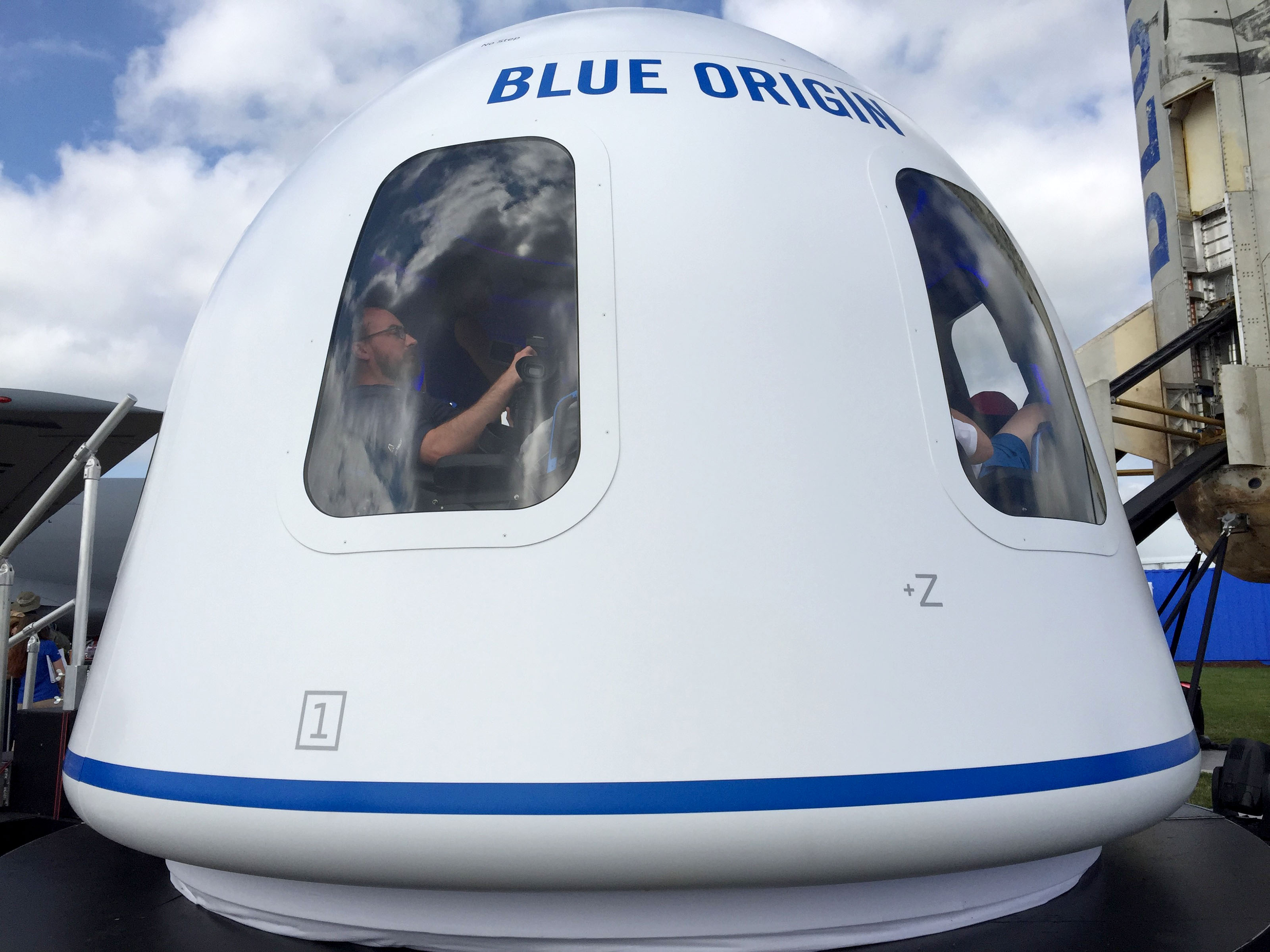
During launch, the three engines in the New Shepard rocket generate some 110,000 pounds of thrust, fueled by liquid hydrogen. The booster is throttable between 20,000 and 110,000 lbst, according to Ariane Cornell, head of astronaut strategy and sales for Blue Origin. At about 75 km in altitude, the rocket releases from the capsule and returns to near its launch pad, landing vertically. A ring around the top of the rocket helps it stay vertical during the descent. At about 20,000 feet, drag brakes pop out of the side of the booster, cutting the descent rate in half. A massive burst of engine power at 3,600 feet further slows the descent as it touches down on crushable legs. The goal is to quickly inspect the engines and launch again in 24 hours. The plan is for the engines to last for 25 flights. The rocket itself should be good for about 100 launches.
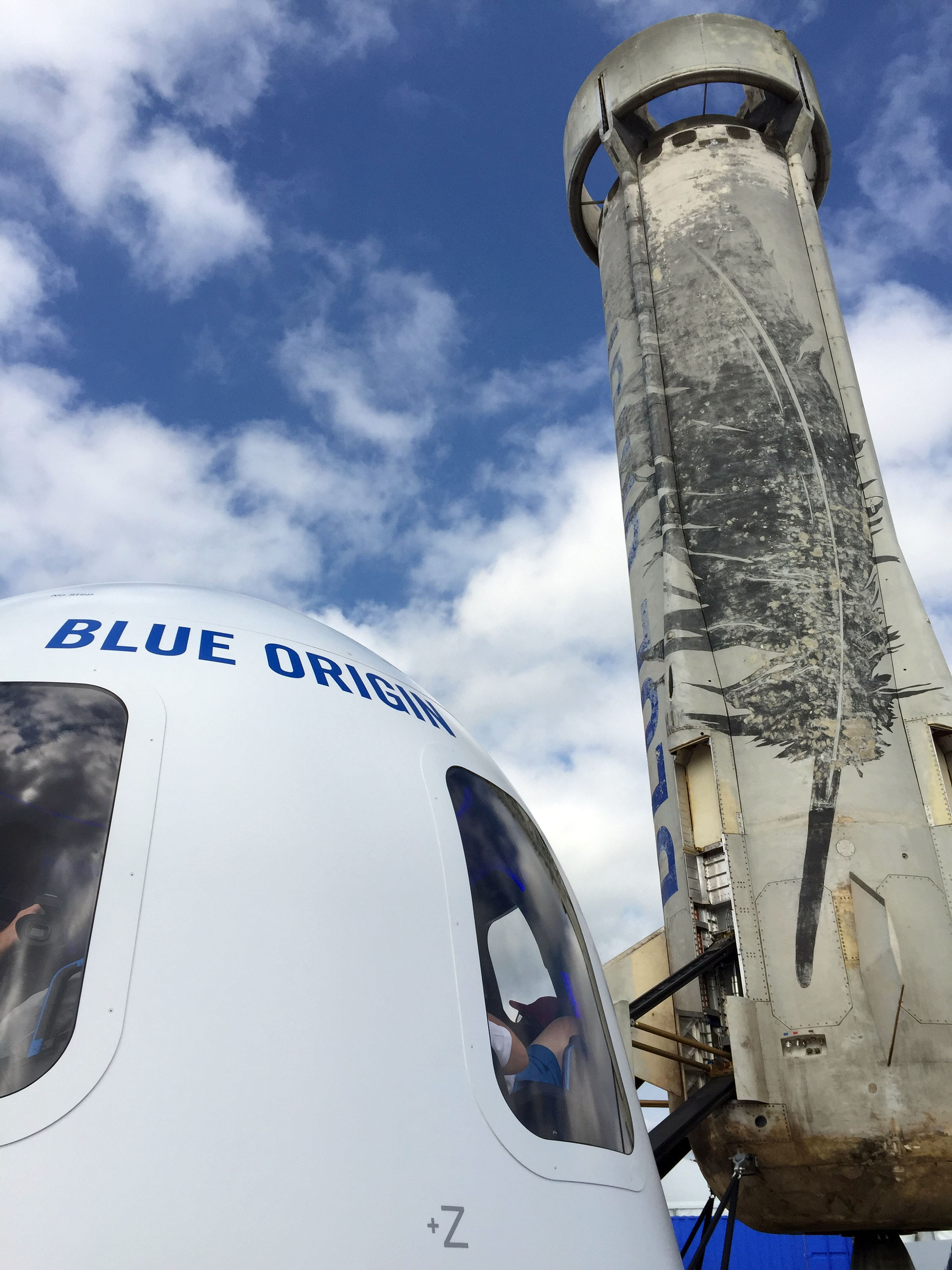
After separation from the booster, the capsule will continue its ascent. At apogee, the capsule will rotate slowly to give all aboard a great view of Earth and space through the six 1,000-square-inch windows.
During the capsule’s descent, parachutes deploy to ready it for a landing. Just above the surface, a blast of air slows it to a gentle landing. Should an emergency occur during ascent, a solid-rocket escape motor on the capsule can propel it away from the rocket for a safe return.
The New Shepard rocket has been successfully launched five times. The next flight with a new rocket will carry a capsule more reflective of the one that will carry passengers, including those massive windows to test their durability.
While passenger flights are about a year away, according to Cornell, work continues on the four-engine BE-4 New Glenn rocket, which is meant to carry payloads into orbit. New Shepard is named after Alan Shepard, the first American into space; New Glenn after John Glenn, the first American in orbit.
The building-block approach to more advanced flights reflects the company’s motto, the Latin phrase Gradatim Ferociter, step by step, ferociously. On the other hand, the company is taking a slow, methodical approach to passenger flights. The Shepard rocket has a turtle painted on it after each flight, a reminder that slow and sure wins the race.
